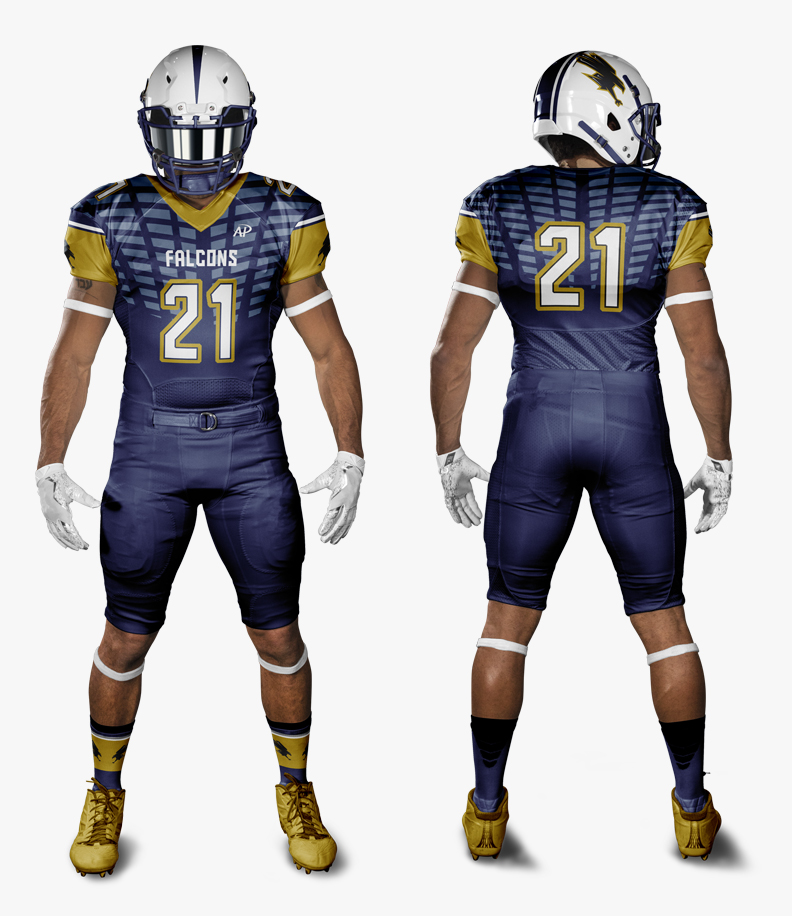

When color television was developed in the 1960s, teams began to use brighter colors in their uniforms in addition to logos so that they would stand out and catch the eye of viewers. In the age of black-and-white television, logos helped fans at home identify their team more than just varying shades of gray. In 1948, a Los Angeles Rams running back painted horns on his helmet, which sparked a wave of logos being added to uniforms. In the 1960s, leather pads were replaced with sleek plastic and fiberglass pads.

The first in-the-jersey padding, produced in 1901, was made of thick leather held in place on the shoulders and other high-impact areas of the body with elastic straps. This is also where the name “jersey” comes from a jersey is traditionally an item of knitted clothing, usually made of wool or cotton.Īs players saw a need for padding, leather patches were sewn onto the outside of the old-school football uniforms. Wool was the warmest material available to football players who played outside in the cold. The first football uniform was made of wool or cotton sweaters with no padding. While the basic reason that football players wear jerseys remains the same, their style has certainly evolved over the years. The reason that football players wear jerseys in the first place is so that fans can identify who is on which team. And like all businesses, the decisions made by owners and shareholders revolve around the consumers– the fans. Whether fans like it or not, football is a business.

Football jerseys have been a symbol of the sport, as iconic as the ball itself, for decades– but how did they come to be? At every game, millions of fans show up donning their favorite player’s jersey to cheer on their favorite team. Nearly seventy thousand people attend each NFL regular season game, with an annual revenue of nearly ten million dollars. Use of the field graphics requires the permission of Austin Snelick and/or John Nelson.While baseball may be seen as the Great American Pastime, football has far surpassed it as America’s favorite sport to watch. The fields displayed are solely the property of Austin Snelick, John Nelson and this site. Use of our constructed uniform images requires the permission of Tim Brulia, Bill Schaefer and/or Rob Holecko. The design of the uniform templates used in the images, and all of their variations, including all helmet templates, are solely the property of Bill Schaefer and this site. This site is maintained for research and historical purposes only, and any information obtained from this site may not be sold to any third parties. Their use has been credited on every image upon which they are utilized. All manufacturers’ logos are similarly the property of those companies, current or former. Teams Abbreviations & Stadiums Codes Cross-ReferenceĭISCLAIMER: All team and league information, sports logos, sports uniforms, and jerseys contained within this site are the intellectual properties of their respective leagues, teams, ownership groups and/or organizations, and were obtained from sources in the public domain.Chronology of NFL Game Officials Uniforms (1920-present).Pro Football Uniform History Project (1933-1958).


 0 kommentar(er)
0 kommentar(er)
